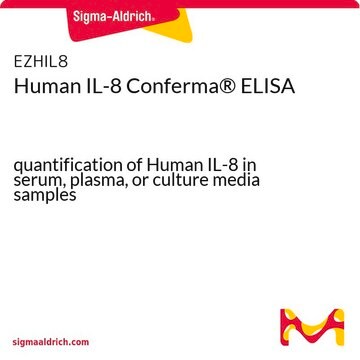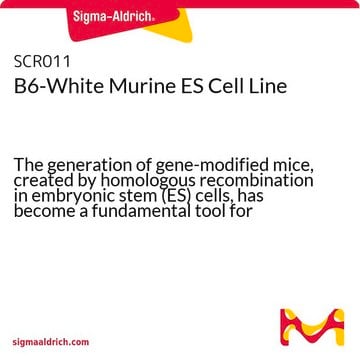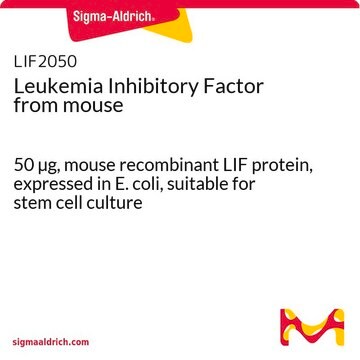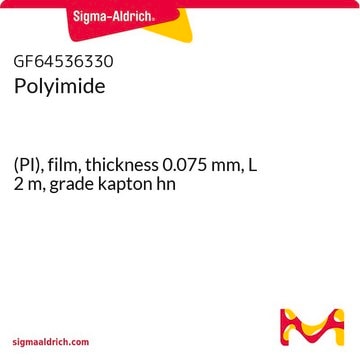07072001
ES-R1 from mouse
07072001, mouse embryo. Monolayer of spheroidal cells on feeder layer of PMEFs.
About This Item
Productos recomendados
product name
ES-R1 from mouse,
origen biológico
mouse embryo
formulario
liquid
modo de crecimiento
Adherent
cariotipo
Not specified
morfología
Adherent monolayer of spheroidal cells on feeder layer of mouse primary embryonic fibroblasts
productos
Not specified
receptores
Not specified
técnicas
cell culture | mammalian: suitable
Condiciones de envío
dry ice
temp. de almacenamiento
−196°C
Origen línea celular
Descripción línea celular
Medio de cultivo
KSR medium consists of KO-DMEM (Gibco 10829), 20% Knock-Out Serum Replacer (Gibco 10828), 2 mM Glutamine (Invitrogen 25030024), NEAA (Invitrogen 11140035), 0.1 mM ß-mercaptoethanol (Sigma M6250) and LIF 1000 Units/ml (ESGRO ESG1106).
Rutina de subcultivo
Porcine gelatine (Sigma G1890) is dissolved in sterile water (0.5 g/500 ml) at 56 °C. The 0.1% solution is sterilized by filtration (0.22 μm). Add 0.1% gelatine to plastic ware to cover bottom, and incubate for 20 minutes at room temperature. Remove gelatine, wash with PBS once and replace with appropriate culture medium. The flask/dish must not be allowed to dry out.
Feeder layers are prepared on the gelatinized flasks at least 24 hours in advance of being required. An ampoule is thawed in 37 °C water bath and the contents quickly transferred to a 15 ml centrifuge tube. MEF medium is added drop wise to 5 ml. Cells are centrifuged at 150 x g for 5 minutes at room temperature (RT). Cells are resuspended in 5 ml of MEF medium. Cells are counted and added to flasks containing the correct medium at 1-3 x 104 cells/cm2.
An ampoule of ES cells is thawed in 37 °C water bath and the contents quickly transferred to a 15 ml centrifuge tube. KSR medium is added drop wise to 5 ml. Cells are centrifuged at 150 x g for 5 minutes. Cells are resuspended in 5 ml of KSR medium. The prepared feeder flask is washed once with PBS and KSR medium added. ES cells should be plated at 4-5 x 104 cells/cm2. Cultures must be incubated in a humidified 5% CO2/95% air incubator at 37 °C. A 100% media change must be performed every day and cells passaged every 2-3 days. Colonies must not be allowed to touch each other as overgrowth will result in differentiation.
Otras notas
Código de clase de almacenamiento
10 - Combustible liquids
Clase de riesgo para el agua (WGK)
WGK 3
Punto de inflamabilidad (°F)
Not applicable
Punto de inflamabilidad (°C)
Not applicable
Certificados de análisis (COA)
Busque Certificados de análisis (COA) introduciendo el número de lote del producto. Los números de lote se encuentran en la etiqueta del producto después de las palabras «Lot» o «Batch»
¿Ya tiene este producto?
Encuentre la documentación para los productos que ha comprado recientemente en la Biblioteca de documentos.
Nuestro equipo de científicos tiene experiencia en todas las áreas de investigación: Ciencias de la vida, Ciencia de los materiales, Síntesis química, Cromatografía, Analítica y muchas otras.
Póngase en contacto con el Servicio técnico








